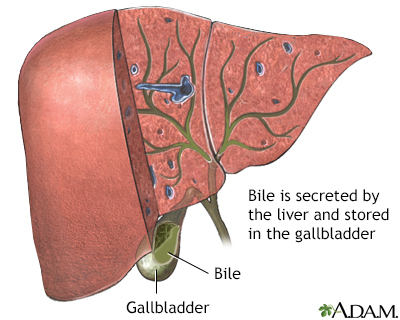Biliary system
Alternative Names
Biliary tract; Bile tract
Information
The biliary system creates, moves, stores, and releases bile into the duodenum. This helps the body digest food. It also assists in transporting waste products from the liver to the duodenum.
The biliary system includes:
- The gallbladder
- Bile ducts and certain cells inside the liver
- Bile ducts outside the liver
Gallery


References
Hall JE, Hall ME. Secretory functions of the alimentary tract. In: Hall JE, Hall ME ed. Guyton and Hall Textbook of Medical Physiology. 14th ed. Philadelphia, PA: Elsevier; 2021:chap 65.
Radkani P, Hawksworth J, Fishbein T. Biliary system. In: Townsend CM, R. Beauchamp D, Evers BM, Mattox KL. Sabiston Textbook of Surgery. 21st ed. Elsevier;2022:chap 55.